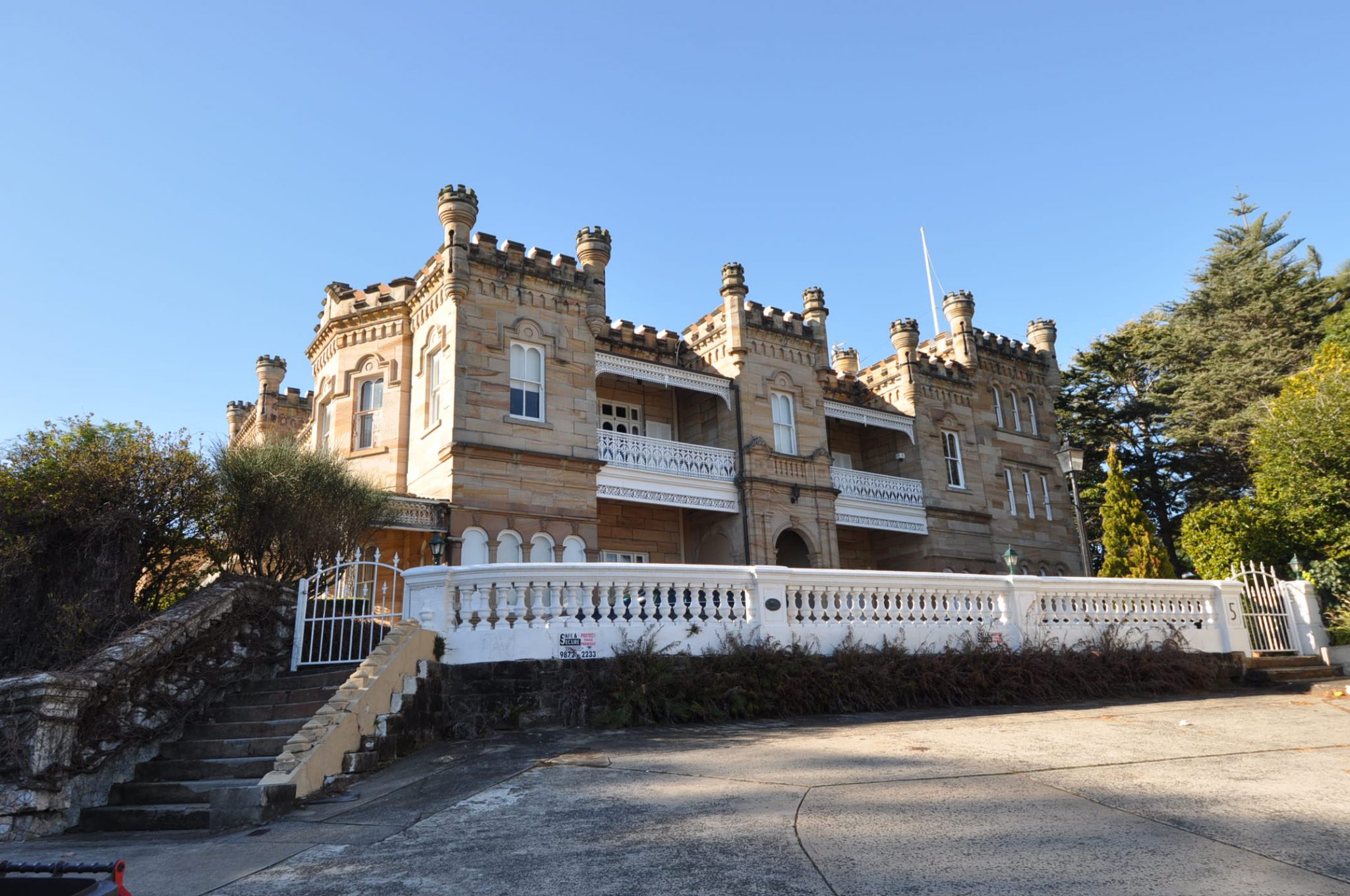Professional Associations
 Funding pressure on Cultural Built Heritage (CBH) has affected the manner in which heritage conservation and management operates. While much heritage literature has focussed on the values of heritage, relatively little attention has been given to the attendant costs. The community exercises choices regarding the quality and nature of heritage conservation. Such decisions entail costs which are either directly imposed (private owners) or indirectly imposed (governments and the community).
Funding pressure on Cultural Built Heritage (CBH) has affected the manner in which heritage conservation and management operates. While much heritage literature has focussed on the values of heritage, relatively little attention has been given to the attendant costs. The community exercises choices regarding the quality and nature of heritage conservation. Such decisions entail costs which are either directly imposed (private owners) or indirectly imposed (governments and the community).
Heritage regulation provides an opportunity to introduce a range of controls over public and private properties of which ‘listing’ is one type. In the longer term, economic viability of CBH dictates that a commercial rate of return will always be sought. If capital cannot be applied to achieve a return on equivalent applications, the opportunity cost of heritage conservation will decline.
In the current political climate there is clearly a threshold on how much government, whether local, state or national, will continue to subsidise heritage conservation activities or restrict private sector activities without there being an adequate return to either directly the government stakeholders or indirectly to the wider community. Under neoliberal governance, the future viability of privately owned CBH will be found in a search for policy tools and mechanisms that facilitate the provisioning of public goods by the private sector.
CBH is by nature a public good yet public funding for it has diminished over the last 15 years in NSW. The way forward will therefore be constituted by a search for innovative ways of funding the privately owned component of the sector – ways drawn mainly from successful examples implemented in other sectors of public goods provisioning such as Medicare (Health), Solar Feed-in Tariffs (Energy), Fair Trade (Employment), Social Impact Bonds (Community), Disability Insurance Tax Levies (Financial) etc would constitute a starting point in a search for better targeted and more flexible policies governing future funding opportunities and incentives for cultural built heritage in NSW.
 To summarise the past few blogs, since my original post on Heritage Incentives, I am advocating the following improvements to the management of locally listed heritage places in NSW;
To summarise the past few blogs, since my original post on Heritage Incentives, I am advocating the following improvements to the management of locally listed heritage places in NSW;
• All DAs involving listed items to incorporate heritage agreements (voluntary planning agreements), negotiated outcomes and solutions derived through mediated discussions between applicants and local government planners;
• NSW heritage policy to recognise the burden placed on private owners and provide incentives outside zoning controls in order to achieve favourable outcomes for the listed stock;
• NSW heritage policy to positively endorse cultural built heritage as a public good in society and encourage uses, opportunities, compensation and special incentives for private owners of heritage places;
• NSW heritage policies to recognise the benefits derived from local tourism and business as a result of investment in the heritage sector (money, information, assistance and professional expertise);
• NSW heritage policy to require that heritage consultants (Council heritage planning staff and private consultants) be accredited through a TAFE course or equivalent so that a consistency of reasoned advice pervades the sector as opposed to tendentious self-serving rubber stamping;
• Greater use to be made of transferable development rights and other financial incentives for DAs involving heritage in order to provide a stream of funding for private owners of heritage places;
• NSW heritage policy to require that all listed places be thoroughly inspected in order to determine the extent of original fabric as opposed to less significant fabric and establish a plan of significance hierarchy (PSH) for each place in which areas of greatest significance are distinguished from those less significant and to require that this information be appended to a statutory inventory sheet attached to the listing. This would provide a much higher level of certainty for developers, owners and incoming purchasers and in turn reverse the negative trend, legal disputes and complex DAs associated with heritage listed items simply through the provision of such information;
• NSW heritage policy to embrace the notion of compensation payable to private owners of heritage places who shoulder the cost burden for maintenance of the stock and to seek ways in which funding might be derived from the community – the mutual beneficiary of the asset along with private owners;
• NSW heritage policy to consider operating the equivalent of the English Heritage ‘Heritage Lottery Fund’ in order to infuse the system (designation, management, interpretation and maintenance) with adequate levels of funding.
The references for these past few blogs include:
 Allen Consulting Group (2005), Thoughts on the ‘When’ and ‘How’ of Government Historic Heritage Protection – prepared for the Heritage Chairs and Officials of Australia and New Zealand – h
Allen Consulting Group (2005), Thoughts on the ‘When’ and ‘How’ of Government Historic Heritage Protection – prepared for the Heritage Chairs and Officials of Australia and New Zealand – h
Castro, Guccio & Rizzo (2011), Public Intervention on Heritage Conservation and Determinants of Heritage Authorities’ Performance: a Semi-Parametric Analysis – International Tax Public Finance 18: 1–16
Daniels, R and Trebilcock, M (1996), Private Provision of Public Infrastructure: An Organizational Analysis of the Next Privatization Frontier – University of Toronto Law Journal, Volume 46, Issue 3. English Heritage (2008) National Incentives Taskforce (2004), Making Heritage Happen: Incentives and Policy Tools for Conserving Our Historic Heritage, Environment Heritage and Protection Council, Adelaide, p. 42.
Productivity Commission Inquiry Report No. 37 (2006), Conservation of Australia’s Historic Heritage Places
Schuster, J. (2002), Making a List and Checking it Twice: The List as a Tool of Historic Preservation, Cultural Policy Center Working Paper No. 19, University of Chicago. Strata Schemes Management Act NSW (1996)
Throsby, D (2006), Paying for the Past: Economics, Cultural Heritage and Public Policy. 51st Joseph Fisher Lecture at the University of Adelaide on 16 August 2006. Wood, M (2007), Review of the Submissions made to the Productivity Commission Inquiry into Australia’s Historic Heritage – Marie Wood, GSRW Consulting Wood, S and Johannson L (2008) Six Principles for Integrating Non-Governmental Environmental Standards into Smart Regulation – 46 Ogoode Hall Law Journal
Paul Rappoport – Heritage 21 – 16 June 2013
Related Articles

New Ways of Assessing Heritage Impact
The system we use today in NSW and Australia generally to assess heritage impact is limited and perhaps slightly old…
Read more
Taxing tourism to pay for cultural built heritage
The World Bank (2010) writes that a good investment climate for tourism, underpinned by a sound tax regime, can play…
Read more
Heritage-Tourism – Loving it to Death
How often have we all heard or read the phrase; “Tourism is a driver of economic development”.
Read more
Is Heritage in the Public or Private Interest?
Clearly, the development and pro- conservation approaches are like ships passing in the night. Will there ever be a happy…
Read more

Need help getting started?
Check out our guides.

Complete the form below to contact us today.









